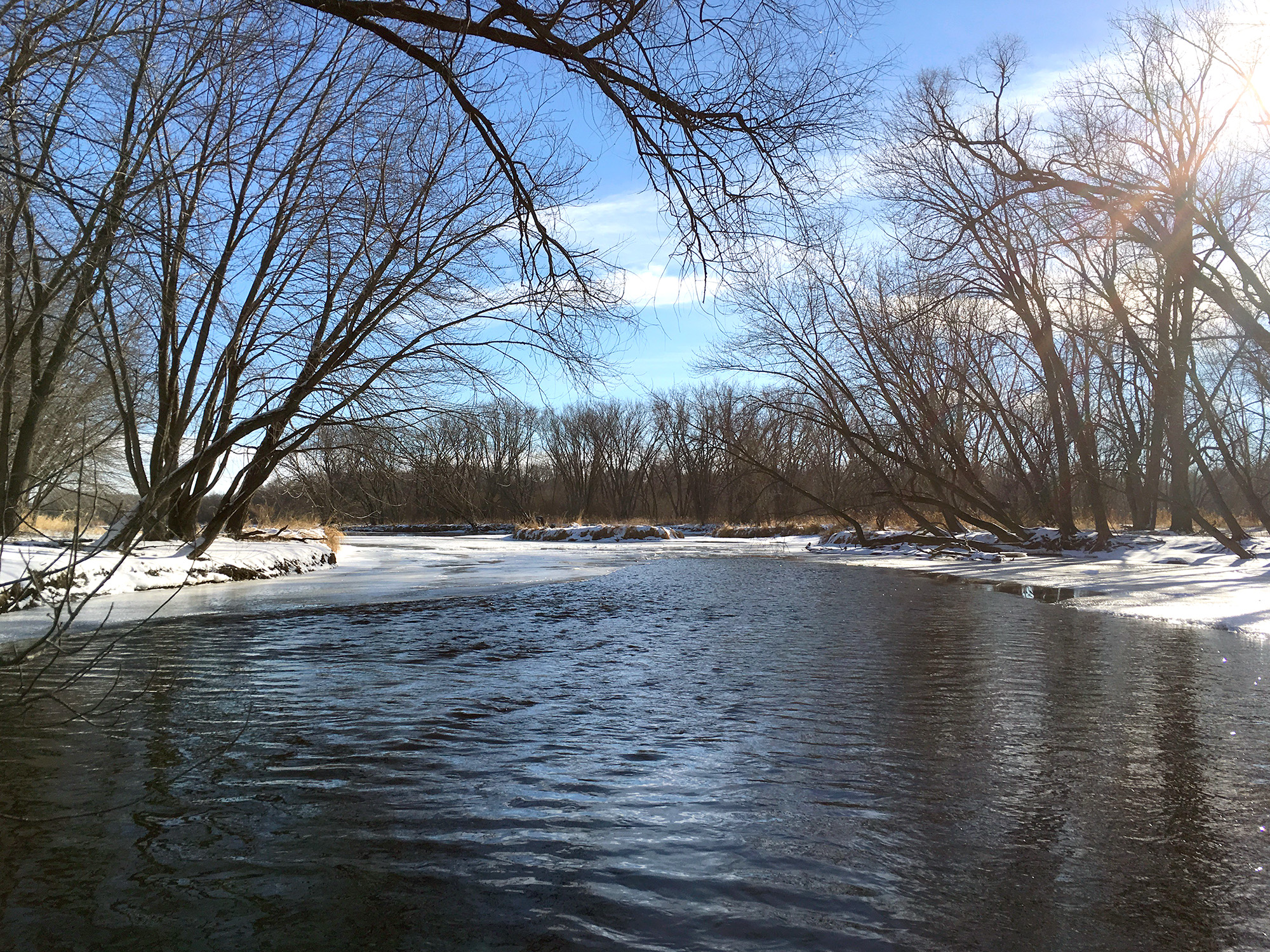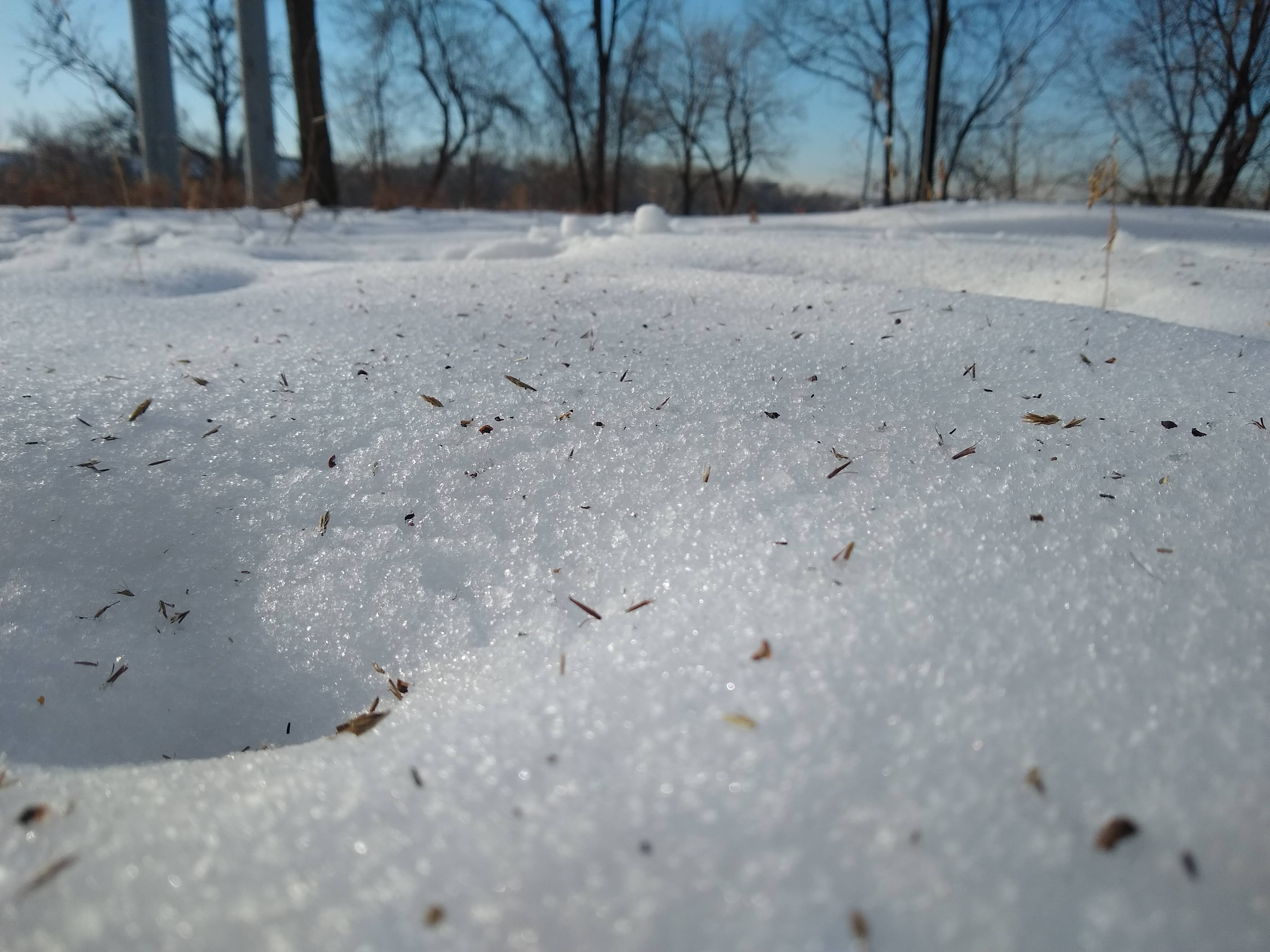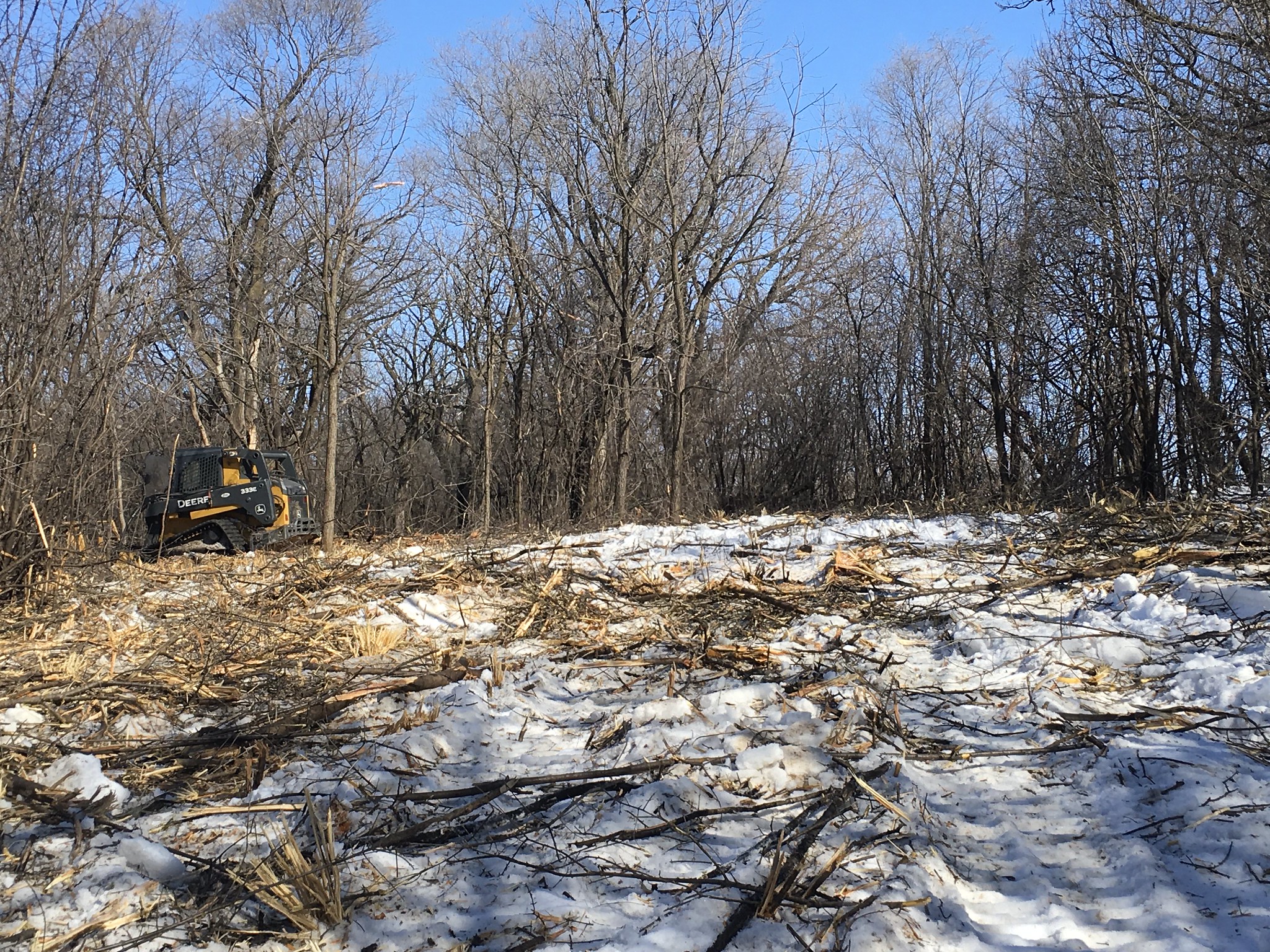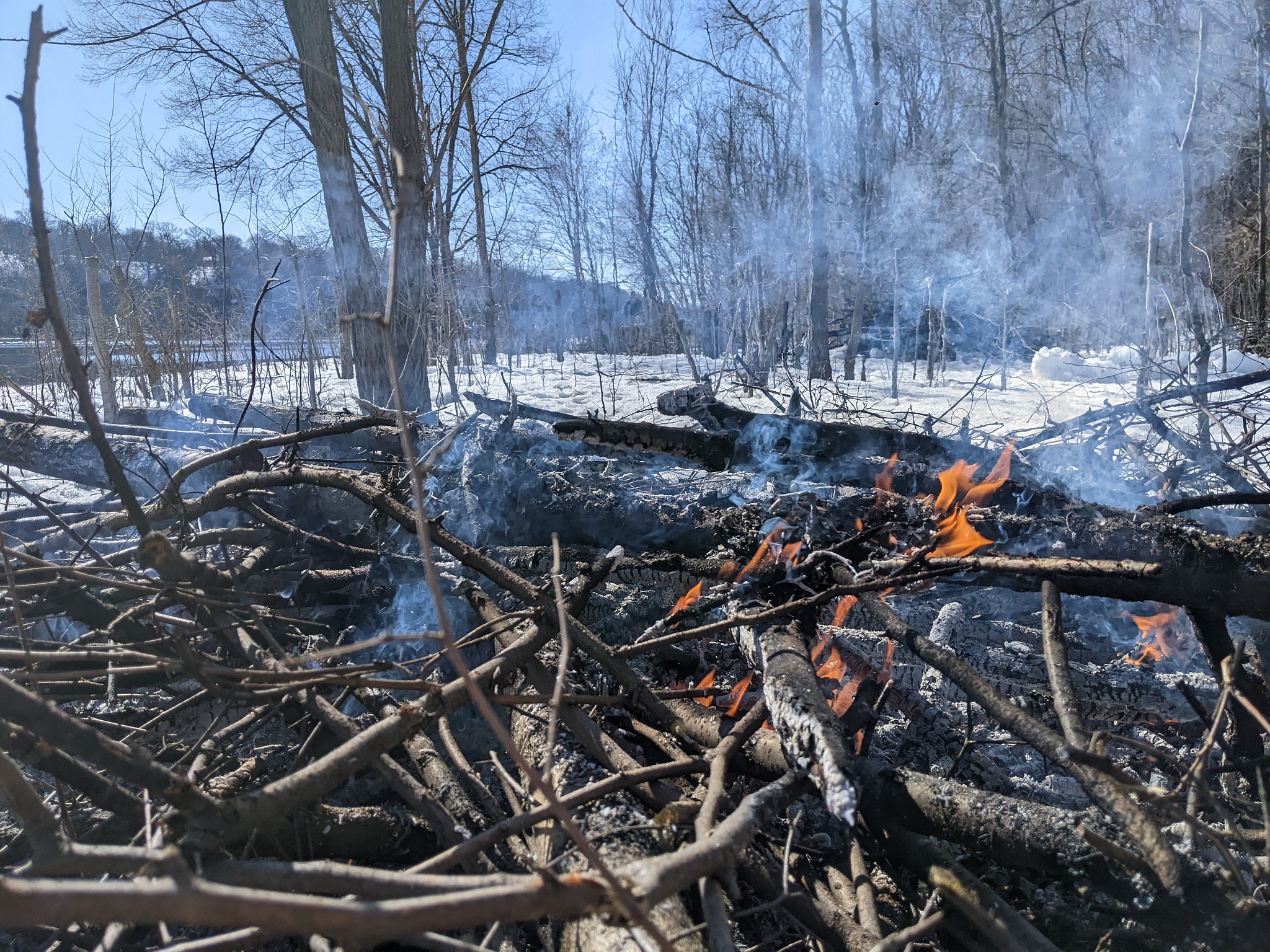How our warm winter affected habitat restoration progress

This winter's warmer temperatures and lack of snow made some of our usual habitat restoration work challenging.
Weather is always a hot topic of conversation in Minnesota, especially in the winter — especially this winter. Whether you're elated about this year's mild temps, longing for your snow pants and boots or worried about climate change, these months of unseasonably warm weather might make you wonder: How will this winter impact plants and wildlife that are adapted to Minnesota's cold, snowy climate?
MPR News tackled that topic during our record-breaking warm stretch at the end of January. And the answer from most scientists is: We don't know yet how this abnormal winter will affect wildlife.
At FMR, what we do know is that this winter impacted our work to restore wildlife habitat. Here are three standard techniques that the warm weather affected — and how we got creative and found solutions.
Problem #1: We usually seed restoration areas when there's snow.

We cast these grass and wildflower seeds over the snow at our Nicollet Island prairie restoration in 2021.
Winter is a great season for seeding native plants. In nature, plant species produce seeds at all different times during the growing season. Most of these seeds drop to the ground by the fall and persist in the soil over winter. They rely on a prolonged period of wet and cold temperatures to signal that it's time to sprout — a period called stratification.
When we restore land, we try and mimic this cycle by timing our seeding with the perfect conditions. We like to seed before a big snow event, or when there are a few inches of heavy, wet snow on the ground and the sun is shining. The sun melts the dark seeds into the snow, protecting them from predators. And the late winter's freeze/thaw cycles eventually sink seeds into the soil. This process ensures the seeds get the environmental signal that winter is here, and they'll sprout when temperatures warm up in the spring.
How we're adapting
This year, we've turned to seeding after rain when the soil is muddy. We might not get a typical winter stratification period, but the seeds will at least stick to the mud, and the daily frost cycles can still work those seeds into the ground.
Problem #2: Forestry mowing works best on frozen ground.

Forestry mowing can take out major areas of buckthorn shrubs at a restoration site.
Forestry mowing is one of our most effective and efficient methods for removing large amounts of woody invasive plants like buckthorn from restoration sites.
Heavy equipment, typically a skid steer, grinds up all woody plants with stems up to 6 inches in diameter in its path — so it works great as a first step in areas dominated by buckthorn, honeysuckle and other invasive shrubs and trees. This method clears the way for us to plant and restore a more diverse forest ecosystem.
Forestry mowing works best in the winter when the ground is frozen. Big equipment can otherwise create ruts or cause soil compaction. With warmer temps this winter, it's taken longer for the ground to freeze to a depth that can support equipment use. And that frozen soil hasn't lasted long, with only occasional short cold snaps and afternoon temperatures frequently above freezing.
How we're adapting
We're keeping a close eye on the daily temperatures and prepping for quick deployment. Even though the weather is generally warm, we've found windows where the ground is frozen and equipment can be used safely. We've also mostly limited mowing work to the mornings before the soil heats up and begins to thaw with the midday sun.
Problem #3: Bonfires are safer when there's snow.

Burning removed buckthorn brush requires a safeguard of snow.
In steep or otherwise sensitive areas that are inaccessible to forestry mowing, our contractors manually remove buckthorn by cutting plants at the base, treating the stumps and piling the material to be burned later. What do we do with all the invasive woody plants we remove? In winter, burning those brush piles is a key next step.
Cutting and treating occurs in all seasons, but burning piled material almost always happens in winter. The snow is like an insurance policy for preventing wildfires: The bonfire can't spread because it's surrounded by readily available water on all sides. Without that snowpack, it's difficult for contractors to obtain permits for burning piled brush.
How we're adapting
In rare cases, it's been safe to burn the brush piles with less than 3 inches of snow. Our contractors spend extra time raking out the coals to dissipate the heat afterward and take other precautions.
In some areas, we've been able to use forestry mowing to mulch up and scatter the brush instead. But most of these spots are pretty inaccessible, which is why we cut and piled brush in the first place. In most cases, the piles we wanted to burn this winter will stick around until next winter.
So if you see a brush pile in your favorite natural area this summer, don't think resource managers forgot about it! We're all holding out for a snowy season next year.
Adaptive management is key
With all of these unanticipated changes and potential roadblocks, it would be easy to throw up our hands and just wait until conditions improve. But FMR's Land Conservation team is used to the unexpected. We routinely use the principle of adaptive management to overcome unanticipated challenges like these.
And in the climate change era when so many of our weather norms are changing, it's reassuring to have adaptive, creative and flexible contractors and partners that allow us to be as responsive as we can to resource challenges.
Although in the case of the remaining burn piles, Minnesota's tried and true sports phrase "better luck next year" applies.
Join us!
FMR is working to mitigate climate change and increase resilience. Read more updates on climate change, and join our efforts as a volunteer, advocate or member.